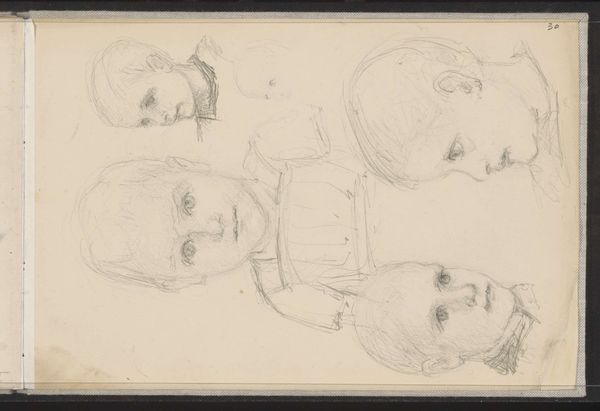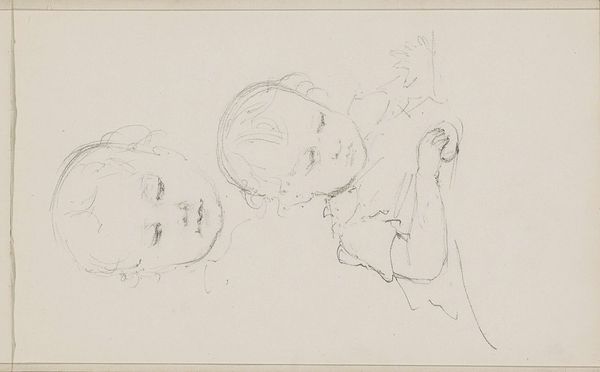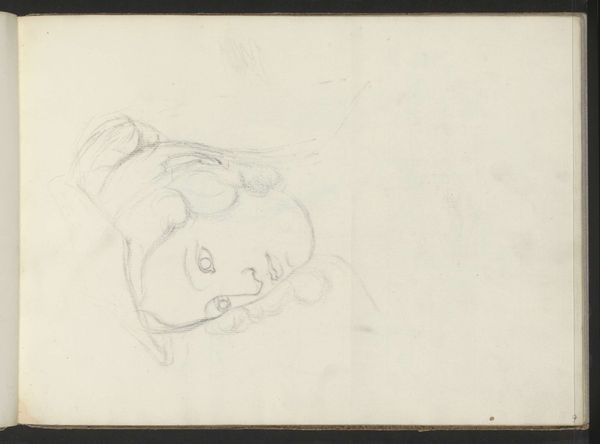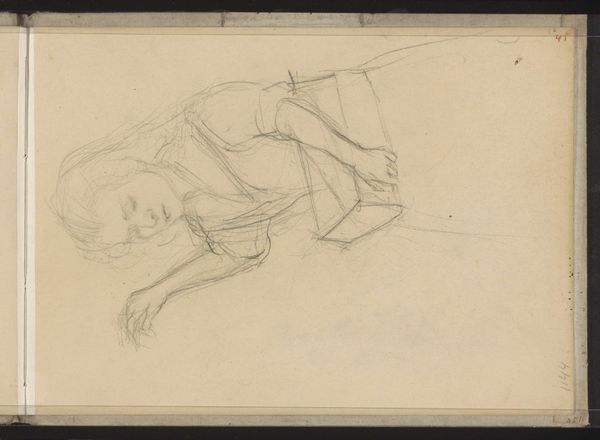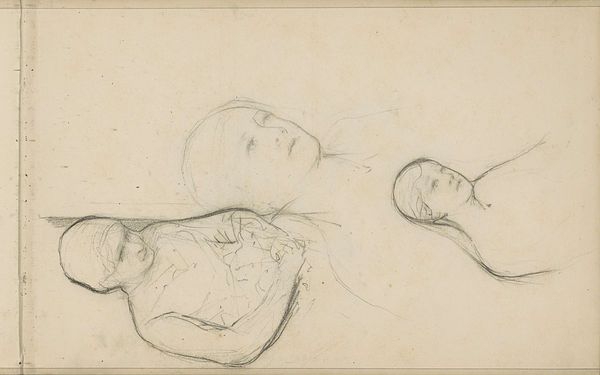
drawing, paper, pencil
#
portrait
#
drawing
#
pencil sketch
#
figuration
#
paper
#
pencil
Copyright: Rijks Museum: Open Domain
This is Jozef Israëls's drawing of a child’s head, made in the late nineteenth century with graphite on paper. The texture of the paper allows the graphite to leave a trace, and the artist uses this to create a sensitive image. You can see the quick, light strokes that build up the form of the child's face, capturing a sense of fleeting movement and expression. The simplicity of the materials emphasizes the artist's direct connection to the subject. Israëls was part of the Hague School, which was known for its focus on everyday life and the lives of ordinary people. Consider the social context of this drawing. In the late 19th century, there was a growing interest in realism and naturalism. Artists turned their attention to the lives of the working class and rural communities. The choice of humble materials and the intimate portrayal of the child reflect these artistic and social values. It reminds us that even the simplest materials, like graphite and paper, can be used to create powerful and meaningful images.
Comments
No comments
Be the first to comment and join the conversation on the ultimate creative platform.

